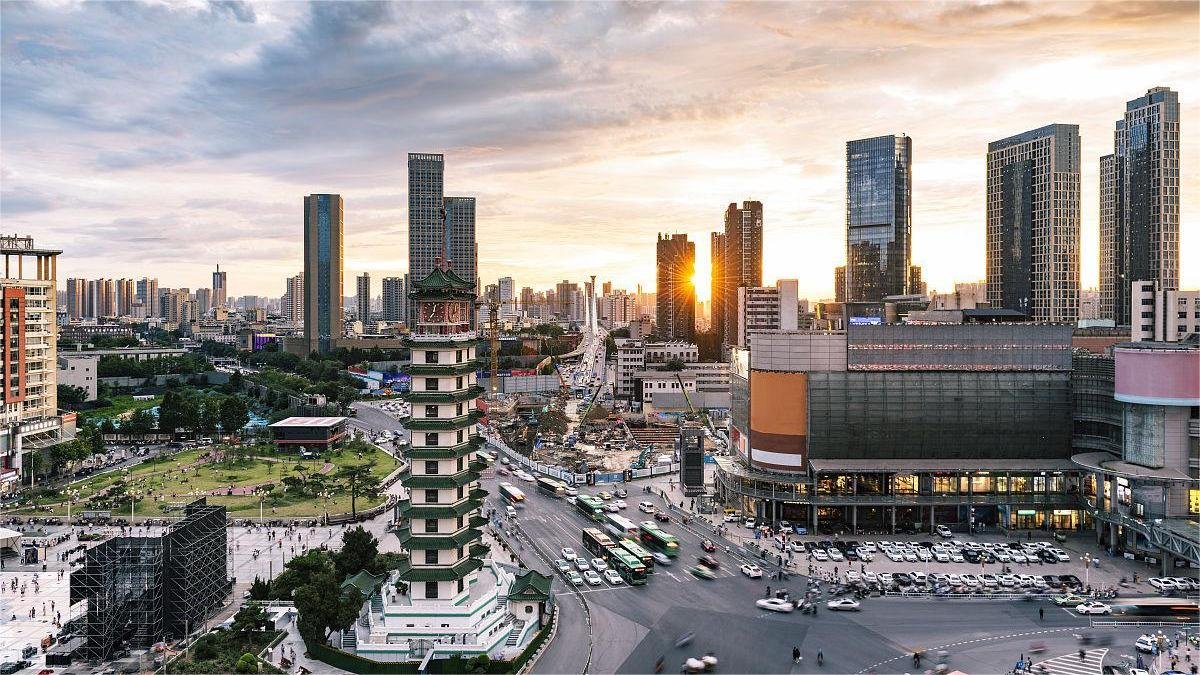The Erqi Memorial Tower (二七罢工纪念塔), located in the heart of Zhengzhou’s Erqi Square, stands as a testament to the historic 1923 Jinghan Railway Workers’ Movement. Constructed in 1971, this memorial is situated on the site where two prominent leaders of the railway workers, Wang Shengyou and Si Wende, sacrificed their lives. Serving as a symbol of Zhengzhou’s urban identity, the tower commemorates the significant labor struggles of the past.
Table of Contents
- Basic Information
- Location and Transportation
- Structure of Erqi Memorial Tower
- Jinghan Railway Workers’ Movement
- Attractions near Erqi Strike Memorial Tower
Basic Information
| Estimated Length of Tour | 0.5 hour |
| Ticket Price | Free |
| Opening Hours | 24 hours a day |
| Telephone Number | 0086-0371-66966798 |
Location and Transportation
The Erqi Strike Memorial Tower is situated at the heart of Erqi Square in the Erqi District of Zhengzhou City, Henan Province. To get there, you can choose one of the following ways:
Bus: Take bus 6, 21, 34, 906, B50, or Y6 and get off at Erqi Square Erqi Road Stop (二七广场二七路站)
Metro: The closest metro station to the tower is Erqi Square (二七广场) on line 1 and line 3. After getting out of the station from Exit D, you will be standing right at the base of the tower.
Structure of Erqi Memorial Tower

Covering an area of 352 square meters, the Erqi Memorial Tower boasts a unique architectural design crafted from reinforced concrete. Its layout comprises two interconnected pentagonal towers, forming a distinctive replica of ancient architecture. Soaring to a height of 63 meters and spanning 14 floors, including an underground level, the tower’s base consists of three levels encircled by balustrades, gradually diminishing in size. Each floor features white cement railings, while the ten upper floors are adorned with eaves and green glazed tiles, presenting an elegant facade of white plastered stone with red-painted square lattice windows on each side.
At the summit of the tower stands a bell tower housing six 2.7-meter diameter bells, with a prominent 9-meter flagpole adorned with a red pentagram. Beneath the tower lies a basement, with an underground passage leading northwest. Within the tower, one side accommodates a spiral staircase ascending to the top, offering panoramic views of the surrounding landscape. The opposite side houses an exhibition hall showcasing historical artifacts, photographs, and documents related to the Erqi Strike, allowing visitors to delve into the rich history of the labor movement.
Jinghan Railway Workers’ Movement

At the dawn of the 20th century, the completion of the Jinghan Railway marked a pivotal moment in China’s industrialization, ushering in an era of mass recruitment of labor along its route. However, the working conditions for the railway laborers were dire, characterized by exploitation stemming from imperialism and feudalism. Workers endured harsh living conditions, restricted personal freedoms, and held low political status. In response to these injustices, the Chinese Communist Party (CCP) established unions in places like Changxindian, Zhengzhou, and Jiang’an, organizing workers to fight for their political and economic rights.
Between April of the 11th year of the Republic (1922) and January of the 12th year (1923), representatives from 16 local labor unions along the Jinghan Railway convened three preparatory meetings for the establishment of a General Union. It was decided that the inaugural congress of the Jinghan Railway General Union would be held on February 1st, 1923, at Pule Park in Zhengzhou. However, fearing the growing strength of the labor movement, warlord Wu Peifu, in collusion with foreign powers, deployed military and police forces to disrupt the congress and suppress the formation of the union. Undeterred, representatives from the local unions and attendees broke through the blockade on February 1st, declaring the official establishment of the Jinghan Railway General Union.
The violent obstruction of the congress led the Jinghan Railway General Union to issue a call for a general strike, articulating five demands and urging solidarity among the people to resist the warlords. On February 4th, 1923, railway workers across the country heeded the call, initiating a nationwide strike. Three days later, on February 7th, Wu Peifu, backed by foreign powers, unleashed a brutal crackdown, mobilizing over twenty thousand troops and police to quell the workers’ uprising. The ensuing “February 7th Incident” sent shockwaves both domestically and internationally, highlighting the ruthless suppression faced by the workers.
The Jinghan Railway Workers’ Movement stands as a poignant chapter in China’s labor history, embodying the courage and resilience of workers in the face of oppressive regimes. Despite the violent repression, the movement symbolized the burgeoning labor consciousness and laid the groundwork for future struggles for workers’ rights and social justice in China.




